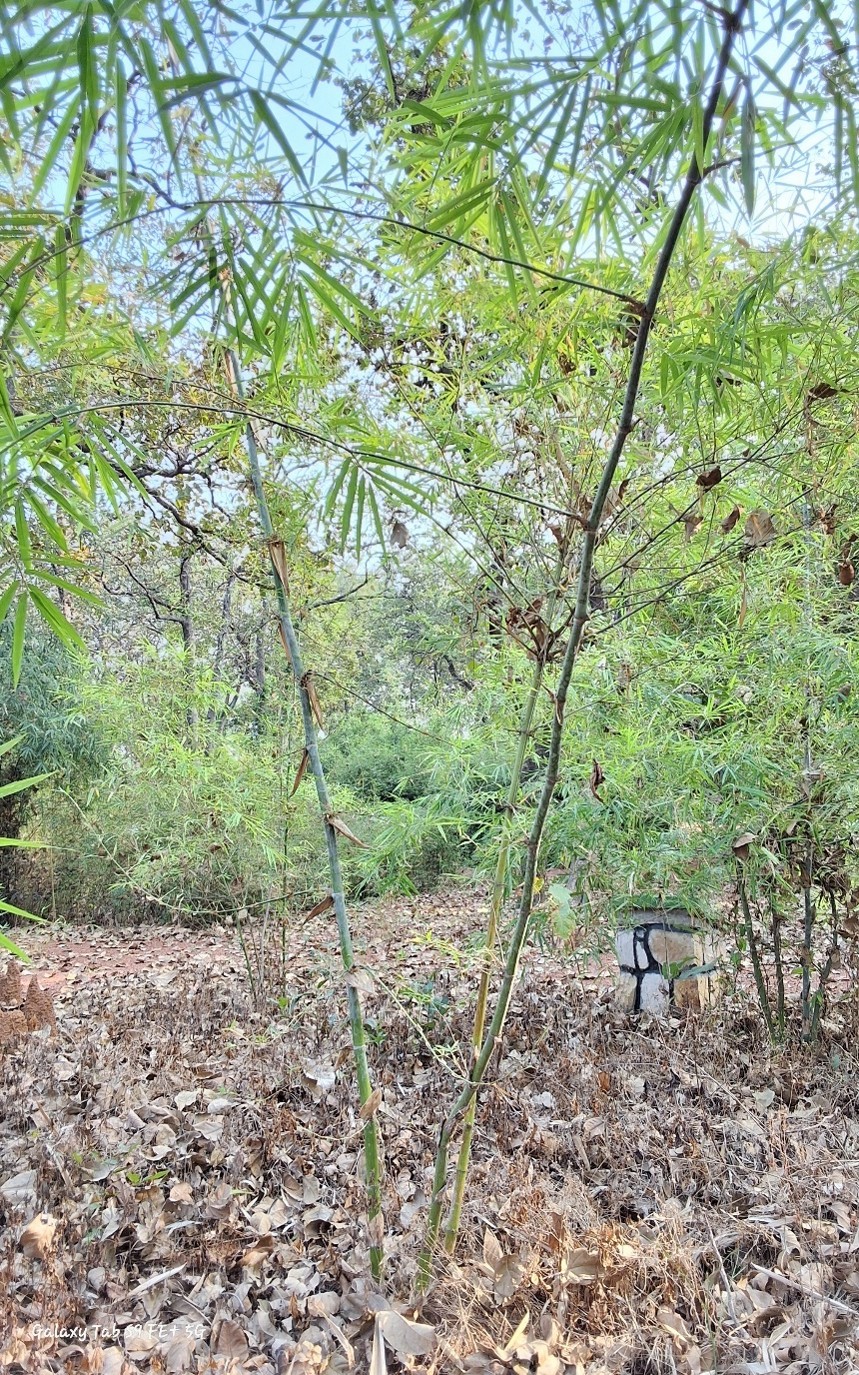Dendrocalamus strictus var. Nilambur

Dendrocalamus strictus var. Nilambur
Dendrocalamus strictus var. Nilambur commonly known as Nilambur Bamboo, is a clumping bamboo variety native to the Nilambur region of Kerala, India, and parts of the Western Ghats. It thrives in moist tropical forests, typically found at elevations between 500 to 1,000 meters, near rivers and streams. This bamboo variety prefers fertile, well-drained soils with a slightly acidic to neutral pH and grows well in loamy, clayey, and sandy soils. The culms of Nilambur Bamboo reach heights of 15 to 20 meters and diameters ranging from 12 to 20 cm, maturing from a green color to a yellowish-brown hue. The bamboo's leaves are lanceolate to narrow oblong, measuring 20 to 30 cm in length and 3 to 5 cm in width, with pointed tips.
The inflorescence of Dendrocalamus strictus var. nilambur is a large, branched panicle bearing numerous small flowers. The flowering cycle of this bamboo is infrequent, occurring once every 30 to 40 years, and it rarely produces seeds. The bamboo is primarily propagated through culm cuttings, clump division, and offsets, with tissue culture occasionally used for controlled propagation. The bamboo’s culms are strong and durable, making it ideal for construction purposes, such as poles, scaffolding, and fencing. Its clumping growth habit ensures stability and makes it suitable for preventing soil erosion, especially in hilly terrains and along riverbanks.
Nilambur Bamboo is also highly valued for its uses in furniture making, crafts, and regional cuisine. The young shoots are edible and consumed in various dishes in the region. Additionally, Nilambur Bamboo is utilized in the production of paper and pulp products, contributing to the local economy. Traditional uses of the bamboo include crafting tools, agricultural implements, and musical instruments. Its versatility, strength, and ecological benefits, particularly in erosion control, make Dendrocalamus strictus var. nilambur a highly valuable species in both commercial and environmental applications.
Listen Audio:
Need assistance? BRTC Faculty